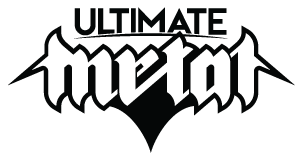Tuning to C# or D?
I'm trying to decide. I think I'm gonna make stuff with guitar in one of these tunings. With D it's somehow more clear since the open notes would not contain # or b and the key notes in D harmonic minor scale contain only one sharp, A# (yep I got used to seeing sharps instead of flats.)
Then there's the choice of intonation, a heavier lower flavor or a sharper more sinister flavor?
Suggestions?
Well, it seems I can transpose tracks easily on tux guitar, so gonna try both... but I'm gonna keep my current bass in BEAD however since it's set up that way with the thick strings and all, let's see if I can transpose those notes on tux without changing tuning...
Still, it's much more about nature of your writing and the tone of your sound and playing, than simple tuning, that determines how evil songs sound like... I just learned Dimmu use standard E tuning... BUT, in my mind musical ideas are sometimes tied to a very specific pitch, so moving it all a notch left or right can change the nature of the whole thing??? Associated with that is of course the problem with having to have accidental notes sometimes, outside the chosen scale... I'm not sure how limiting a scale should be.
Mors Principium Est use E standard also. IMO tuning doesn't really matter. A low tuning gives a heavier and muddier tone, so if you want to play djent you probably want to tune down quite a bit, but otherwise it's quite irrelevant. I'm also used to using # instead of b when naming the black keys of a piano.
For intonation always just try to get it to be as accurate as possible. Having the intonation be off will make the entire string sound out of tune. Most people won't notice it, but those who do will hate you for being lazy while tuning.
Seeing as your bass is in BEAD it would be best if you had your guitars in B standard. If it were a 5 string bass E standard would be perfectly valid too. Having a different tuning on the guitar and bass will make some stuff impossible to play on one or the other. For example, try playing Master of Puppets in D# which is where they play it live nowadays I believe (Original is in E standard). It's absolutely impossible unless you are tuned to D# standard.
Personally, with modern instruments, I see it as superstition to claim that a melody played in E sounds different than the same melody played in D

The pitch is different yeah, but the mood of the melody remains the same with modern instruments and their equal temperament intonation (Every pitch is exactly the same distance from each other). The idea that a melody's mood is different in different keys is from somewhere around 1600-1800 when pianos were intonated according to the true temperament system. A piano intonated with a true temperament system for the key of C would sound absolutely "pure" (Little to no dissonance at all in chords) when playing from C major, but would sound slightly out of tune (VERY slightly. 99+ percent of people wouldn't be able to hear it) when playing stuff in, say, E major, because the intonation would have been optimized for C major, not E major. Nowadays instruments are intonated according to the equal temperament system where it's equally good for all keys. A modern piano won't sound as good for C major as one from 1700 would've, but it'll sound far better for all other keys than the one from 1700.
I personally was VERY much a slave to scales for the first years of composing. I've since begun to get over my obsession with always remaining withing a scale (Switching scales in a song was fine), but I'd say that it's good to remain within a single scale with a single melody most of the time. Chromatic stuff is far harder to make sound good than modal stuff. Sometimes it might work to have a note outside of whatever scale you're using, but it should always be because it sounds better that way, not because "I wanted to experiment and be cool", which is how I did it a first (And then realized it was stupid and proceeded to always remain within a scale for the next 5 years).
If you want to practice having multiple scales in a single melody, this video is a good place to start. It's also good for a quick start in creating certain atmospheres into your songs. Anyway, there's the example of "Fantastical" which in E would go E major to C major and back. You could try starting the melody in E major and then go into E major with a b6 for the C major chord. It'll most likely sound pretty good yet be outside of scale (The entire chord is out of the E major scale).
Another example is adding F to E minor. Metallica does this a LOT. Half of Enter Sandman is based on that added F note for example. A# is also something that you can add to E minor and make it sound a bit more evil.

